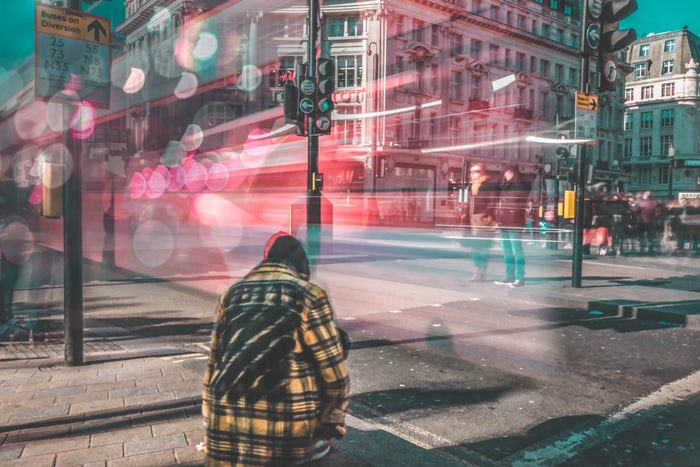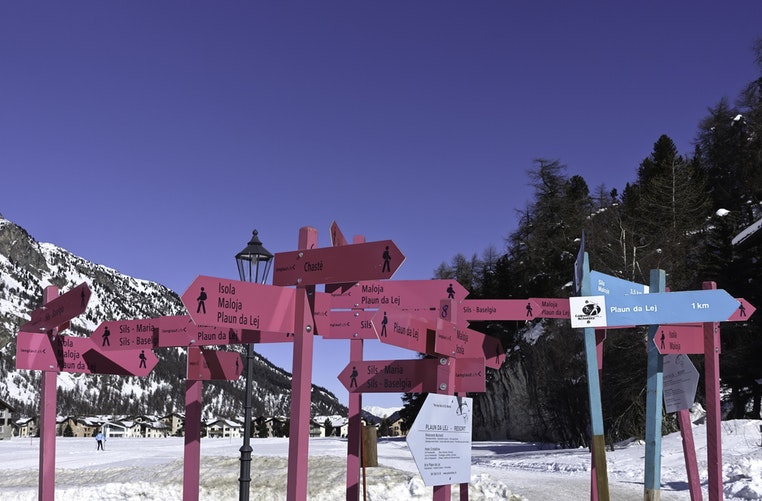WAYFINDING AND NEUROSCIENCE
It feels like second-nature to know where we’re going, whether it’s through a familiar room in the dark, or the town where you grew up. Then again, some people might be better than others at getting to a location that’s new to them. Consider finding any landmark on your first trip to a new city, or retracing your steps to the store or the brand new dog park in your annual summer holiday retreat. Some people seem to have a GPS implanted in their brains, while others are just not in relationship with directionality.
In research that won the 2014 Nobel Prize in Physiology and Medicine, we’ve learned why that is. All of it—the “second-nature” aspect and the fact that navigation is not the same for everyone—is individual. Just like everything else “human,” our navigation skills are part of our brain function.
“Wayfinding” was coined in 1960 by urban planner Kevin A. Lynch, when he defined it in his book, The Image of the City. Very simply, he wrote that wayfinding is “a consistent use and organization of definite sensory cues from the external environment.” Meanwhile, we all know that some of us do better when told to “go east three miles, and then go north,” while others—most, actually—prefer, “turn right for about four or five minutes, then turn left at the big, red barn.” The challenge for wayfinding designers is to create a system of graphics, signage, and other environmental supports that works for everyone. No matter what language they speak.

To make matters even more challenging, Toronto researcher Colin Ellard, who conducts experiments that measure how the brain and body respond to different settings, adds a wrinkle. He talks about how our physiological arousal rates—the stimulation of our nervous systems—is higher in urban sections and lower in green spaces. To designers, this means that we must take into account the fact that people might be more distracted in urban settings—vehicular and pedestrian—and therefore, signage has to respond to this. However, Ellard also said that even when stimulation rates were lower in natural settings, sometimes people didn’t record their responses accurately—because they were relaxed. Does this mean they won’t see wayfinding signs in parks? But in a “different way”?

Hopefully understanding more about the brain will help. According to The Academy of Neuroscience for Architecture (ANFA), the 2014 Nobel Prize related to wayfinding was awarded to three neuroscientists, John O’Keefe, Professor at University College London, and May-Brit Moser and Edvard Moser, Professors at the Norwegian University of Science and Technology. “The award recognizes their fundamental contributions to our understanding of how our brains create and store maps of our physical environments and retrieve spatial memories that allow us to know where we are and how to find our way to where we want to go; in other words, they have elucidated the brain mechanisms we use in wayfinding.”
The Nobel Foundation describes the researchers’ groundbreaking work this way:
This year´s Nobel Laureates have discovered a positioning system, an “inner GPS” in the brain that makes it possible to orient ourselves in space, demonstrating a cellular basis for higher cognitive function. In 1971, John O´Keefe discovered the first component of this positioning system. He found that a type of nerve cell in an area of the brain called the hippocampus that was always activated when a rat was at a certain place in a room. Other nerve cells were activated when the rat was at other places. O´Keefe concluded that these “place cells” formed a map of the room. More than three decades later, in 2005, May-Britt and Edvard Moser discovered another key component of the brain’s positioning system. They identified another type of nerve cell, which they called “grid cells,” which generate a coordinate system and allow for precise positioning and pathfinding. Their subsequent research showed how place and grid cells make it possible to determine position and to navigate. The discoveries of John O´Keefe, May-Britt Moser and Edvard Moser have solved a problem that has occupied philosophers and scientists for centuries—how does the brain create a map of the space surrounding us and how can we navigate our way through a complex environment?
Like rats, humans have “place cells” and “grid cells,” among others, that store information about a location in a particular space. The space is defined by a set of cues we perceive and remember, allowing us to orient and determine direction and distance. Importantly, according to ANFA, this is where the architect and designer come in: “designing spaces that are straightforward for the user to navigate, by considering geometry and the location of cues and landmarks that facilitate our ability to create and retrieve the maps we need to have a practical and useful ‘sense of place.’”
Unfortunately, no matter how much we know about the brain, not all architectural spaces are easy to navigate—especially institutional ones. Hospitals and universities are routinely used as examples where maze-like floorplans result, despite the best intention of planners. This reality can be compounded during expansions and renovations. Likewise, urban environments can be very confusing, especially as districts are added.
Wayfinding designers have developed process workflows, as well as approaches to cues and landmarks, intended to aid in navigation. Still, there remains the great unknowable variable: which ones are best for “everyone”? Plus, ANFA adds, spatial cognition decreases with age. When designing wayfinding packages, then, the designer has to consider:
- Best cues and landmarks for each setting;
- How “stimulating” or “engaging” (i.e.: distracting) a setting is;
- The level of complexity, especially in institutional or urban settings;
- How to access the “inner GPS” of various end-users;
- Abilities of various end-users to understand wayfinding information.
In our opinion, great wayfinding is “invisible,” because it does everything it’s meant to do—and it does it so well, you don’t even consciously notice. At the same time, if your eye does notice wayfinding, your brain appreciates its design elements and clear communication. We also believe that the best wayfinding designers must have very advanced “place” and “grid” cells. Since they inherently are especially good at “feeling” their way through spaces, you might have them ride shotgun when you’re driving through a new town.
SOURCES
ELLARD, COLIN, “The psychology of architectural and urban design”;
LYNCH, KEVIN, The Image of the City. Cambridge, MA: MIT Press (1960).
MACAGNO, EDUARDO, PH.D., “Direct relevance of the 2014 Nobel Prize in Physiology and Medicine to Neuroscience and Architecture, and to the mission of ANFA”;